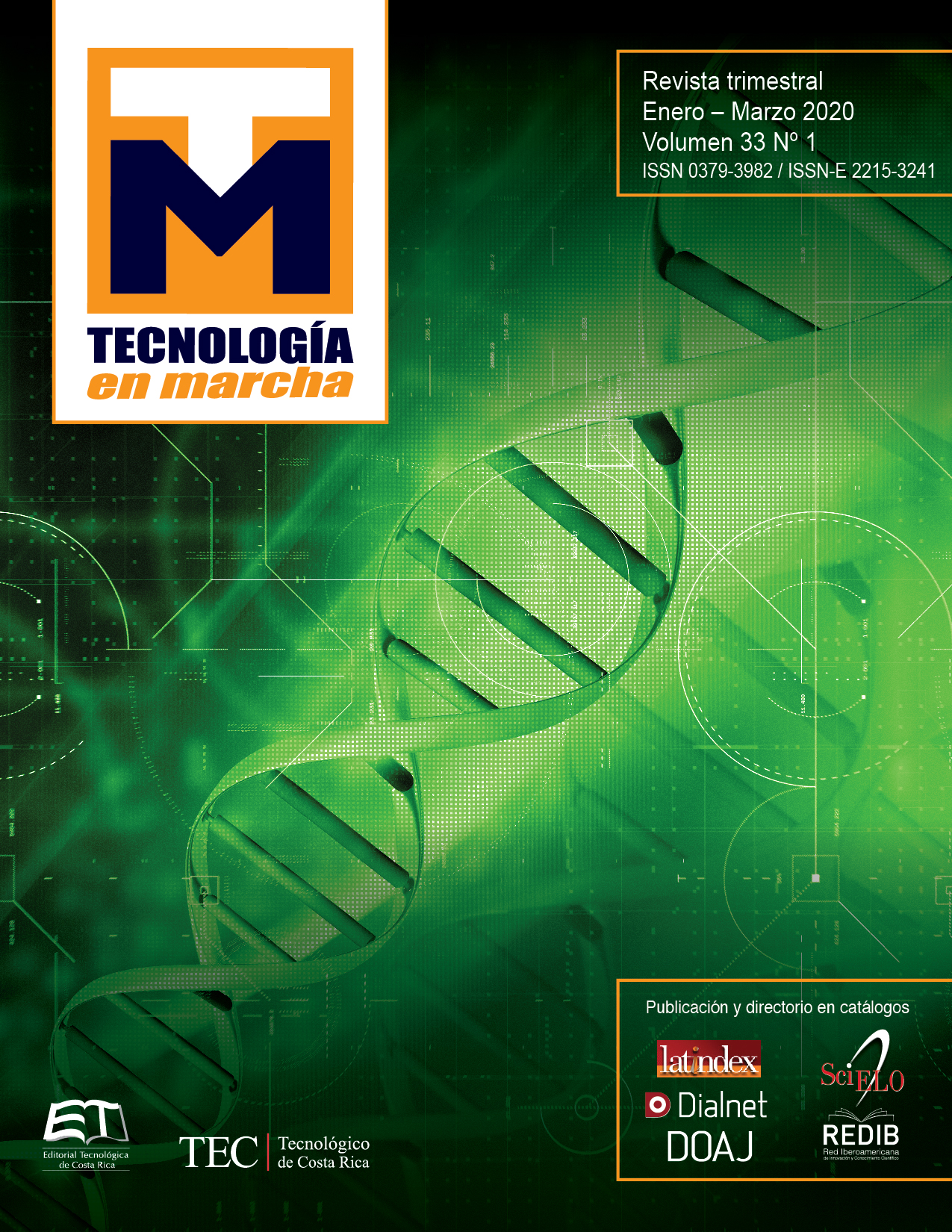Evaluation of the management and final disposal of the poultry litter of heavy breeders used as organic fertilizer in Costa Rica
Main Article Content
Abstract
Five poultry companies raise broiler breeders in Costa Rica. These birds go through two stages, rearing and laying, and at the end of each stage they generate the residue known as manure or litter. This study includes information from the five production companies supplemented with import data obtained from the National Animal Health Service (SENASA), in order to determine that the manure of broiler breeders in Costa Rica amounted more than 20 thousand metric tonnes of litter were produced in 2016.
After a heating process on the chicken house, litter material goes out to a warehouse or passes directly to farms for it to be used in crops as fertilizer. During the research of the residue flow, the determination and evaluation of Critical Points (CP) were obtained, which resulted from deviations considered in the environmental effects, such as the use of poultry in agricultural soils in which the material is exposed to the environment or slightly covered with soil but after some days is uncover.
When calculating the agricultural area that uses poultry manure, it was estimated that 2.404 hectares used this product in 2016, and if the growth rate of the population of broiler breeders is maintained, this area will be doubled within the next 20 years.
Article Details
Los autores conservan los derechos de autor y ceden a la revista el derecho de la primera publicación y pueda editarlo, reproducirlo, distribuirlo, exhibirlo y comunicarlo en el país y en el extranjero mediante medios impresos y electrónicos. Asimismo, asumen el compromiso sobre cualquier litigio o reclamación relacionada con derechos de propiedad intelectual, exonerando de responsabilidad a la Editorial Tecnológica de Costa Rica. Además, se establece que los autores pueden realizar otros acuerdos contractuales independientes y adicionales para la distribución no exclusiva de la versión del artículo publicado en esta revista (p. ej., incluirlo en un repositorio institucional o publicarlo en un libro) siempre que indiquen claramente que el trabajo se publicó por primera vez en esta revista.
References
[2] Comisión Económica para América Latina y el Caribe, (CEPAL), “Estimaciones y proyecciones de población a largo plazo 1950-2100”, 2017. [En Línea] Disponible en https://www.cepal.org/es/temas/proyecciones-demograficas/ [Accedido: 09-ago-2018)
[3] M. Ávila, R. Campos, L. Brenes y M. Jiménez. “Generación de biogás a partir del aprovechamiento de residuos sólidos biodegradables en el Tecnológico de Costa Rica, sede Cartago,” Tecnología en Marcha, vol. 31, n° 2, pp. 160-170, 2018.
[4] J. Bunge, “La humilde carne de pollo sería la cura para detener el hambre del planeta. Economía y Negocios”, 2015. [En Línea] Disponible en http://www.economiaynegocios.cl/ [Accedido: 04-jun-2018]
[5] R.Molaey,A. Bayrakdar, R. Sürmeli y B Çalli. “Anaerobic digestion of chicken manure: Mitigating process inhibition at high ammonia concentrations by selenium supplementation. Biomass and Bioenergy” vol.108, pp. 439-446, 2017.
[6] M. Estrada. “Gestión de la Gallinaza” [En Línea] Disponible en https://albeitar.portalveterinaria.com/noticia/10313/articulos-aves-archivo/gestion-de-la-gallinaza.html [Accedido: 12-jun-2018]
[7] C. Williams. “Gestión de residuos de aves de corral en los países en desarrollo” North Carolina State University, Department of Poultry Science, Raleigh, NC. [En Línea] Disponible en http://www.fao.org/docrep/016/al715s/al715s00.pdf [Accedido 19-jun-2018]
[8] Asamblea Legislativa Costa Rica, “Ley para la Gestión Integral de Residuos (N° 8839)”. [En Línea] Disponible en http://www.gaceta.go.cr/pub/2010/07/13/COMP_13_07_2010.html [Accedido: 23-may-2018]
[9] Poder Ejecutivo, “Reglamento sobre granjas avícolas. Decreto Ejecutivo N° 31088-S” [En Línea] Disponible en http://www.mag.go.cr/legislacion/2003/de-31088.pdf [Accedido: 09-may-2018]
[10] Poder Ejecutivo, “Reglamento sobre el manejo y control de gallinaza y pollinaza (Decreto Nº29145-MAG-S-MINAE)” [En Línea] Disponible en http://www.pgrweb.go.cr/scij/Busqueda/Normativa/Normas/nrm_texto_completo.aspx?param1=NRTC&nValor1=1&nValor2=45557&nValor3=47995&strTipM=TC [Accedido: 8-may-2018]
[11] A. Cartín, A. Villarreal y A. Morera, “Implementación del análisis de riesgo en la industria alimentaria mediante la metodología AMEF: Enfoque práctico y conceptual,” Rev. Med. Vet, vol. 27, pp. 133-148, Ene. 2014.
[12] R. Abín, “Impactos ambientales de la producción de huevos: Análisis del ciclo de vida y huella de carbono,” Tesis de maestría, Universidad de Oviedo, España, 2016. [13] Dirección de Cuarentena Animal del Servicio Nacional de Salud Animal (Senasa), Importaciones de aves reproductoras pesadas del 2012 al 2016, 2017.

